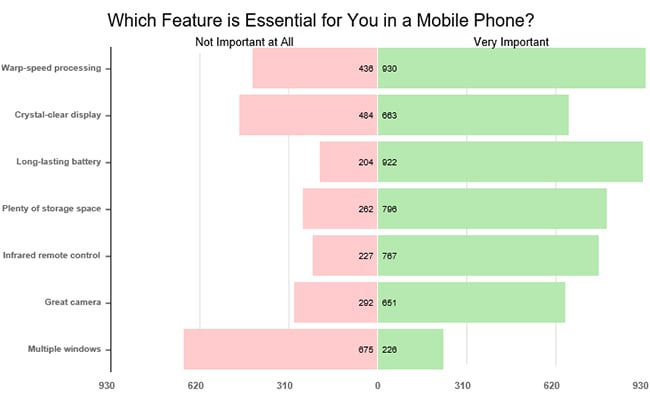Some people say that a product manager plans what to build next. I hate this description because far too many product teams over focus on chasing new shiny features.

I get it. What could be more satisfactory than launching something new or solving a new problem?
But let’s look at some of the most successful companies out there. How many unique features does Duolingo have? Or Spotify? Or Audible? Just a few.
You win markets by doing a few things really well. One great feature beats ten mediocre ones every single time.
Instead of thinking about what to build next, try taking a step back and ask yourself what to optimize next. Building a great product often involves launching numerous features, seeing which ones stick, and doubling down on them. But how do you know which features to double down on?
Let me walk you through a few techniques you can employ to evaluate which of your current features deliver the most value, both from a user perspective and a business perspective.
Assessing user value
First and foremost, you need to validate that your feature provides value to your target audience. Although some features bring more value to the business than to your users, your most valuable features nail both categories at once.
Key tools at your disposal to assess user value include:
- Data analysis
- Regret surveys
- Max-diff surveys
Data analysis
For fast insights about a feature, look towards your data. Pay close attention to these two areas:
- Usage
- Adoption (what percent of users use the feature)
- Engagement (how often is the feature used and at what scale)
- Feature retention (how long do users keep using the feature after day 1)
- Behavioral patterns
- Are there any interesting correlations between feature usage and overall user behavior?
For usage, I just like to score each category from one to three, where, in the case of adoption, the categories would mean:
- 3 — The majority of the user base uses this feature
- 2 — The feature is fairly common
- 1 — Minority or no users use the feature

Although ranking these features based on average scores might be tempting, I don’t recommend doing that. It gives the illusion of science, whereas you can just mark high-level signals.
Behavioral patterns are also important. To simplify it, I usually look for correlations between feature usage with:
- Retention
- Money spent
- Overall engagement

A retention analysis signals that users watching TV series have higher retention than users watching movies.
Regret survey
You can gain a lot of value from regret surveys, despite the fact that they’re rarely used.
Here, you want to identity your ideal users who:
- Stick with you for the long-term
- Spend a lot of money
- Engage with the product often
The results might surprise you. For example, it might turn out that customers miss a feature they rarely use.
Max-diff survey
Although max-diff surveys are usually used in packaging research, they also come in handy in other use cases.
Max-diff research requires three steps:
- List out up to eight features you want to evaluate in terms of user preferences
- Send out a survey and ask users to select one most important and one least important feature
- Plot results on a chart

This self-declaratory survey reveals what users perceive as important.
Assessing business value
Although user value is essential, you also need to evaluate features from a business value perspective. After all, you need to grow and generate revenue.
I usually assess features’ business value by evaluating their contribution to the growth model, specifically:
- Acquisition
- Habit formation
- Revenue
Unlike assessing user value, I don’t use many quantitative metrics or analyses here. The growth model itself is a strategic decision-making and bet-making process that can’t really be measured.
Impact on acquisition
First ask whether the feature helps you acquire new users, and if yes, how does it align with your future acquisition strategy?
Say you set out to build a Reddit-like forum and have a feature that uses AI to turn the most engaging conversations into articles. Your users might not care about those articles at all, but if it helps you build a strong SEO presence, then the feature generates value acquisition-wise.
Second, ask if it aligns with your future vision. If your strategy relies on SEO as a growth channel, then the AI article feature helps acquisition-wise. If, on the other hand, you plan to become a virality-first product, optimizing this feature might be a secondary priority.
Impact on habit building
After the first question, determine if the feature helps establish a habit around the product.
On first thought, you might think that any feature that passes the user-value test helps to achieve that, but there are exceptions.
Take Social media. Executives at companies like Meta know that excessive notifications combined with FOMO and a like-chase culture aren’t really healthy and valuable for users.
Nonetheless, these executives do make people use Meta products more often, dramatically decreasing the chance of them turning anytime soon.
Impact on profit generation
After this, ask how much profit you generate from a particular feature and whether it aligns with how you envision your revenue strategy.
Get somewhat scientific by doing the math. However, remember to include the costs of revenue for a given feature. The highest revenue doesn’t necessarily mean the highest profit.
Putting it all together
Although there’s no scientific formula, you can arrive at strong enough signals to make an initial gut-feeling assessment. If a particular feature turns out to be among the winners in each category, then it’s no brainer — double down on optimizing this feature.
If you discover conflicting signals, decide priorities yourself by reviewing the current stage of product development. Ask whether a feature impacts retention, engagement, acquisition, revenue, or something completely different. Decide on your most important priorities and prioritize features that align with them most.
Thanks for reading!
Featured image source: IconScout